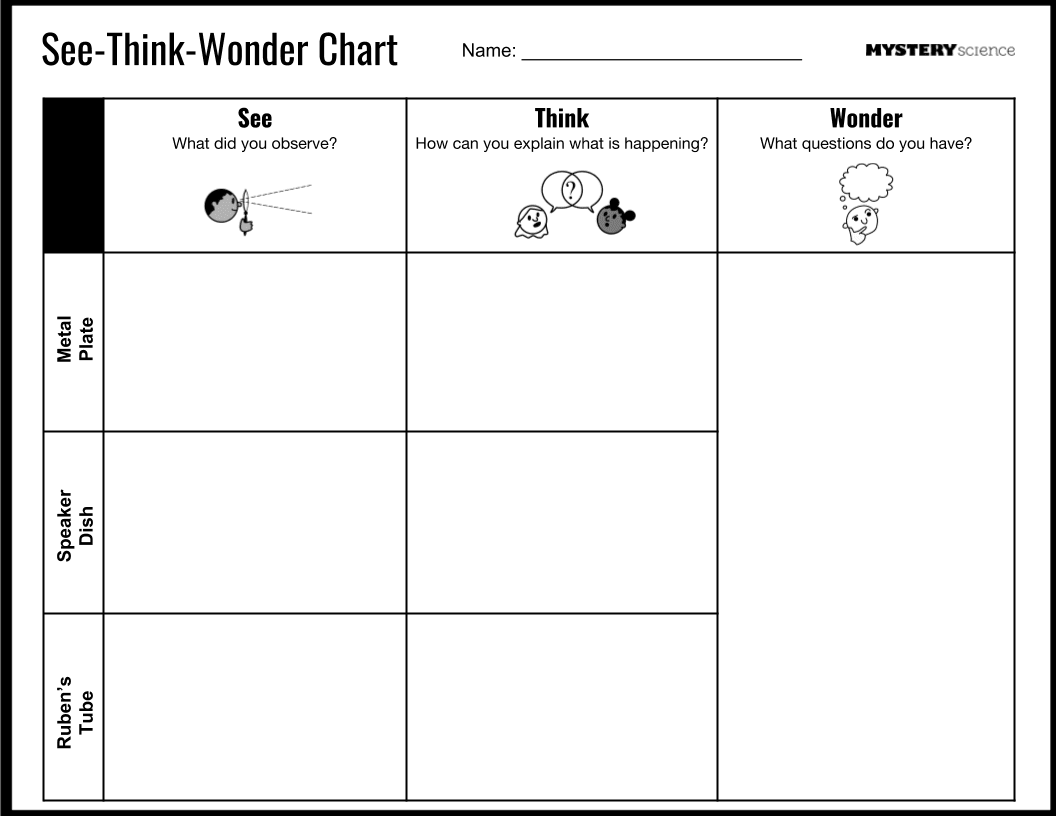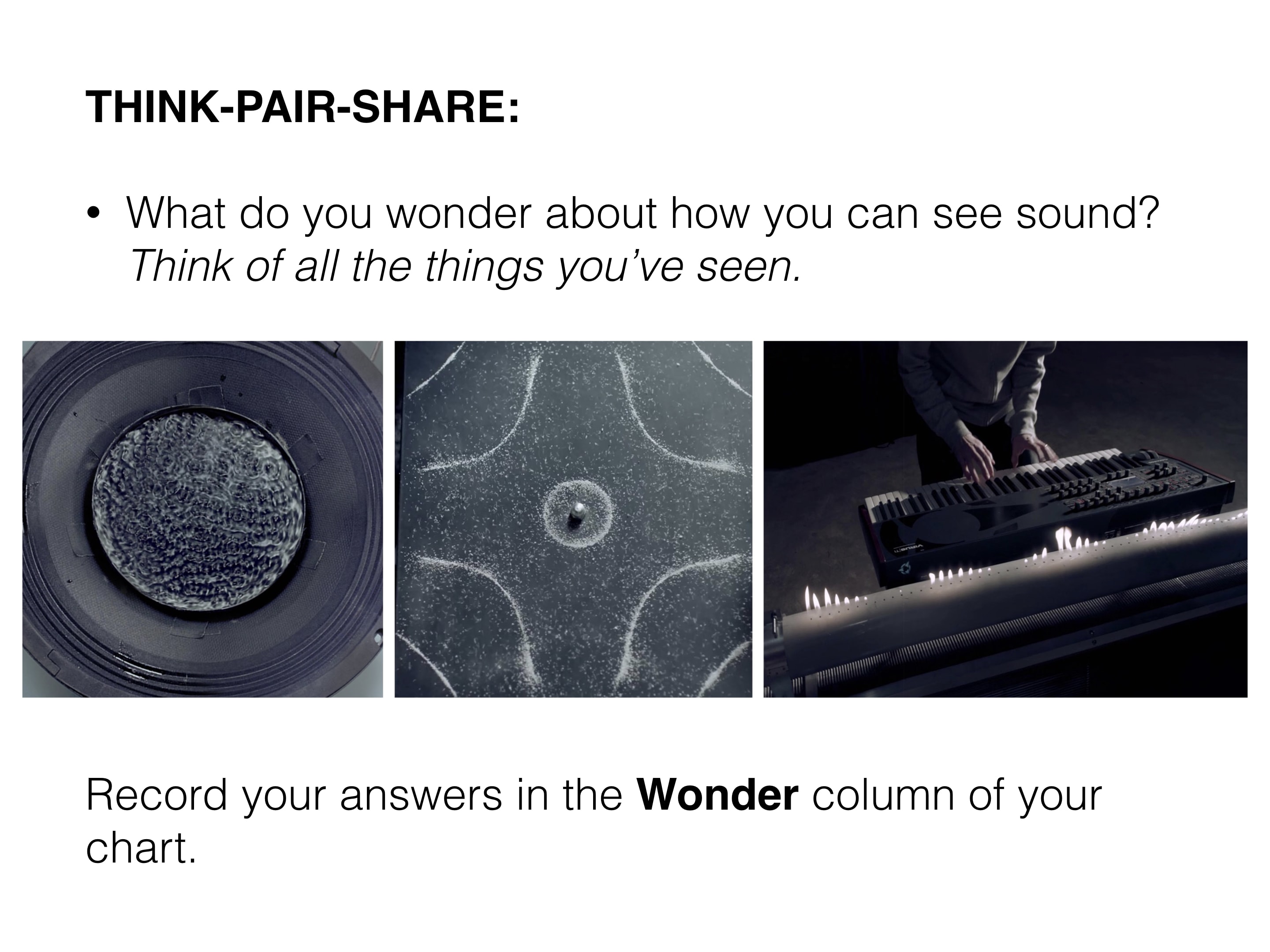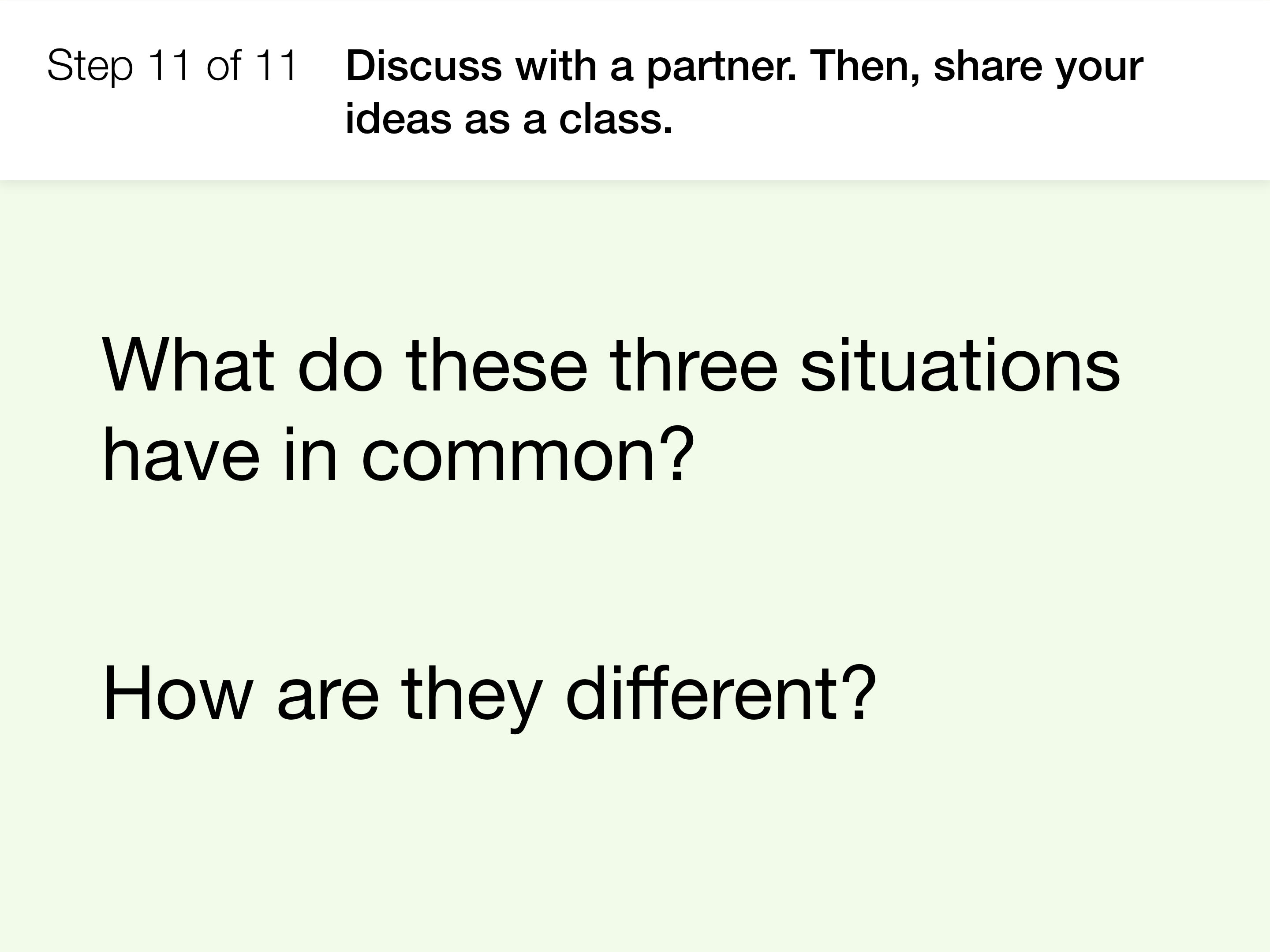The anchor phenomenon for this unit is a collection of devices that make sound waves visible, in a music video by composer Nigel Stanford. In the activity, they create an initial conceptual model to explain how each device works. Students will re-visit their model after each Mystery to add new information to it.
It is important to encourage students to recognize that this activity is about making predictions to explain the phenomenon. They are going to learn a lot throughout the unit and have an opportunity to change or add to their first model.
Step 1: Plan Ahead
Before starting this lesson, review the unit Teacher Guide for an overview of the Waves of Sound Anchor Layer.
Set up your classroom by creating a class "See-Think-Wonder" chart (the student version is linked below). We recommend using chart paper, or a space on your board that won't be erased since you will revisit it throughout the unit.
Step 2: Print out worksheets
Each student needs a:









